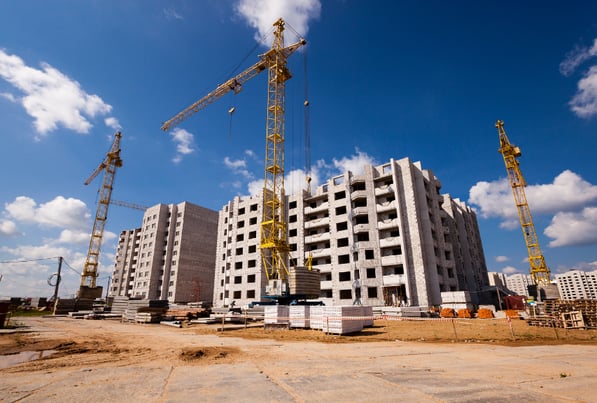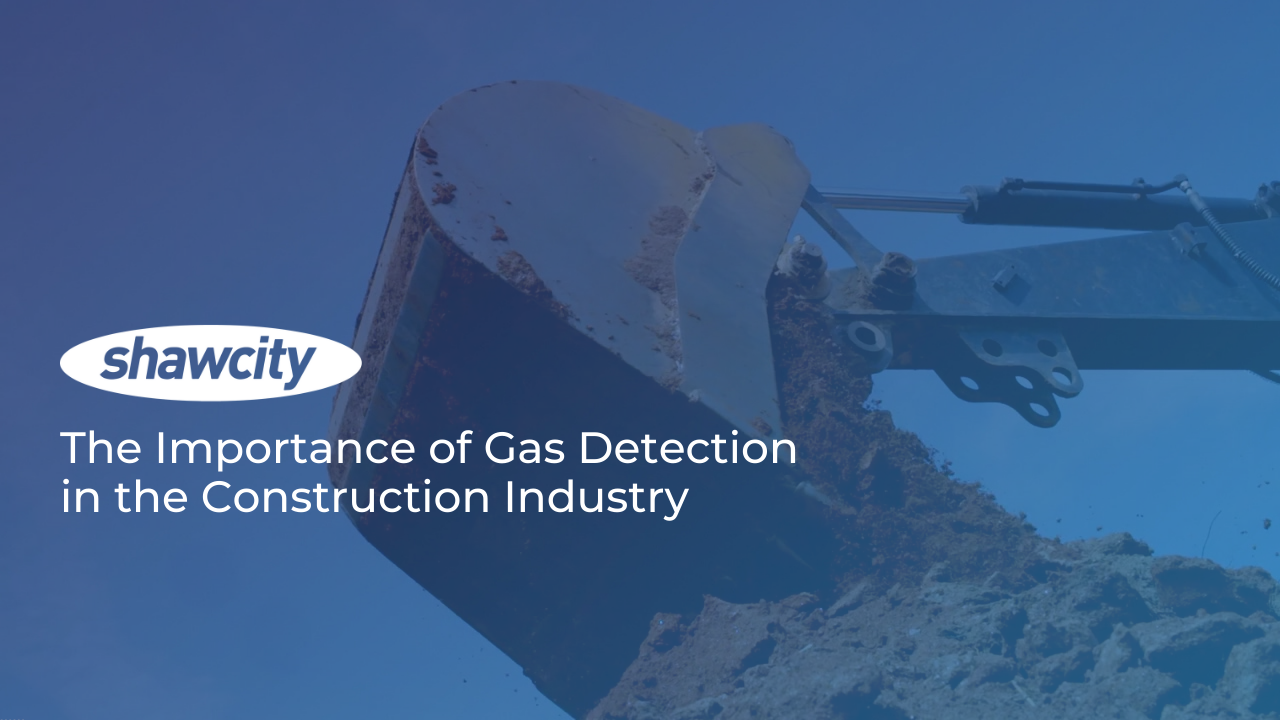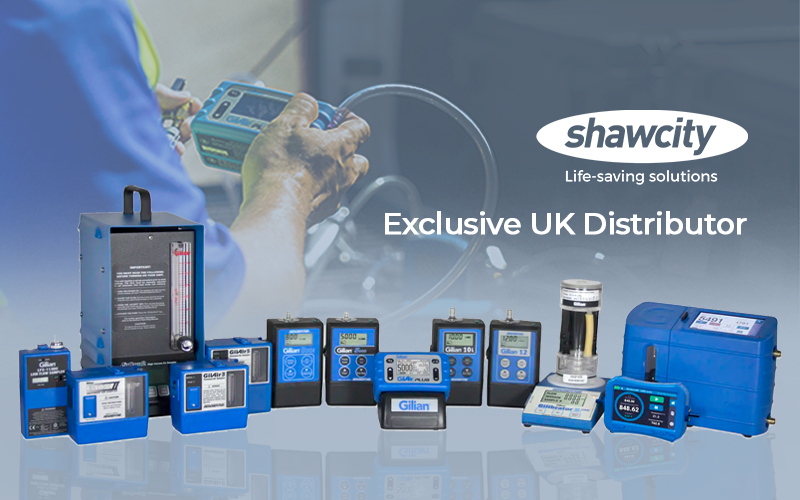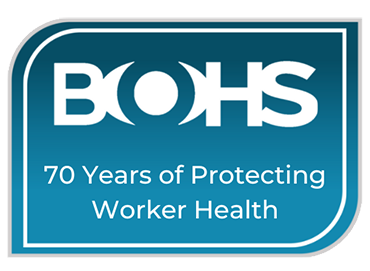How to minimise gas hazards and risks with the application
of advanced gas detection technology
People who work in the construction industry can potentially be exposed to risks arising from hazardous gases. According to the HSE, in 2019/20 there were 8 fatalities and more than 200 non-fatal incidents related to harmful gas exposure in the UK construction industry, whereas the previous two years recorded two fatalities in total.
It is evident that volatile organic compounds (VOCs) pose a significant risk to employee health and safety in the construction industry. The risk comes from a variety of sources – naturally occurring, industrial, and by-products of combustion and other construction-related activities.
In the construction industry, there are five primary sources of hazardous gas exposure:
Building material storage
The industry uses a number of VOCs and hazardous chemicals such as adhesives, paint, and flammable gases which are stored on-site in tanks, cylinders and containers. If these items are incorrectly stored or sustain damage during transit, they can pose a hazard to site personnel including the risk of asphyxiation or explosion.
In the UK, the Health and Safety Executive (HSE) sets out guidelines for the safe storage of hazardous chemicals and gases, which includes guidance for correct ventilation, compatibility with other stored materials, stacking and storage layout, on-site transportation, container maintenance, and containment of leaks and spills.
Welding
Welding is a construction activity that uses hazardous flammable gases, such as acetylene, argon, hydrogen and propane. The most common type of on-site welding is MIG or TIG welding which often uses a carbon dioxide and argon mix.
During welding activities, fumes are released as the metal is heated above its melting point, causing evaporation and condensation into fumes. In addition to metal particulates that may affect long-term health, welding fumes may contain nitrogen oxides, ozone, hydrogen chloride, phosgene, and carbon monoxide, which makes them a potential risk to workers, especially in confined spaces.
In 2018, based on strong evidence, the International Agency for Research on Cancer (IARC) classified welding fumes as a carcinogen. Appropriate risk assessments and ventilation are essential if serious risk to health is to be avoided.
Trenching & Excavation
All construction projects involve some degree of land trenching and excavation, which may also create what are technically classed as confined spaces. As well as the risk of cave-ins, digging activities can also result in the release of toxic gases if ground gas pockets are breached or sewer or gas pipes are accidentally ruptured.
Additionally, exhaust gases from machinery can accumulate to dangerous levels and reduce the oxygen levels in the trench or hole. Some common gas types including carbon dioxide are far denser than air and can collect in depressions, holes and trenches, where they may cause their own health effects in addition to reducing the oxygen intake of anyone operating in the space. Some flammable gases common on building sites, such as carbon monoxide and methane are even denser and can pool unseen in the bottom of trenches where they may be ignited by a hot surface or a spark. The risk of collecting nitrogen gas and causing asphyxiation by displacing oxygen is another common issue.
Land Clearing
During land clearing activities, the chances of a gas supply pipe rupture increase. Underground pipe location technology has improved in recent years with the application of electromagnetic and radio detection tools, but these methods are never fail-safe. If a gas pipe rupture goes unnoticed, the risk of explosion and other risks to personnel increases considerably.
Demolition
Demolition activities often take place in hazardous environments such as old industrial buildings. The risk of unintentionally releasing hazardous gases such as carbon monoxide, methane, or hydrogen sulphide from historic or unknown sources is high during demolition works.
Gas detection is an important control measure to help reduce the risk of harm to construction workers and can be applied at various stages of the construction process.

Gas detection at the design and planning phase
The Construction Design and Management (CDM) regulations state that the Principal Designer must consider potential hazards at the design stage. The designer and planning officers should raise any gas risk concerns that are picked up when surveying the site and recommend the provision of gas detection in specific areas.
Underground gas detection
Earthworks and excavation are the most likely activities to result in the release of gas pockets such as methane or carbon dioxide that have been trapped underground. Das detection devices can be deployed to collect data and establish an accurate picture of ground gas conditions before works commence. Gas taps can be installed prior to excavation if required.
Rupturing buried services
A thorough paperwork survey and ground scanning survey should be undertaken prior to construction work, to reduce the risk of accidentally rupturing a gas pipe.
Above-ground construction activities
Once construction work commences, there is an increased risk of carbon monoxide poisoning due to exhaust fumes or exposure to hazardous gases as a by-product of common activities such as welding. Where necessary, gas detection technology should be applied at this stage, with devices fitted inside excavator and bulldozer cabs, for example.
Underground construction activities
Mining and tunnel boring activities create a high risk of toxic gas build-up being released into the environment. Machinery will produce carbon monoxide (CO) and other exhaust fumes that can be potentially deadly. Naturally occurring gases such as nitrogen monoxide (NO), nitrogen dioxide (NO2), carbon dioxide (CO2), and hydrocarbons (HC) may also be released during these processes.
Gas detection technology from Shawcity
Shawcity offers a wide range of gas detection instrumentation to monitor construction site safety levels and help companies to comply with regulations.
Portable gas monitors are quickly and easily deployable and offer flexibility. If alarm levels are exceeded, workers within construction environments can take immediate and appropriate action.
Fixed gas monitors provide constant readings from a specific location and therefore can be implemented throughout a construction site for a cross-section of monitoring reports. Site-wide warning systems offer data from a number of areas and can be analysed within a central control room or remotely.
If abnormalities are detected, automatic alerts and safety measures can be activated to provide instant safety measures, alongside options to remotely shut down an area and isolate hazards.
For more information about gas detection solutions or to discuss your specific monitoring requirements contact Shawcity on:
01367 899419
solutions@shawcity.co.uk
www.shawcity.co.uk
Ref: Crowcon white paper

-1.png)









